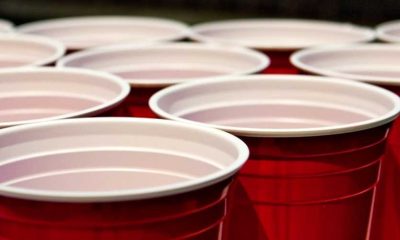Beer
Learn About Beer Making With This Crash Course
Let’s talk about beer, shall we? Why? Because they are so damn good, that’s why! Unfortunately, living in India does not give us access to the wide range and varieties of beers available to people living in other parts of the world, such as the US and Europe. But, we have to make do with what we have and we do it quite well. A day will come when regional microbreweries become the norm in India and we will all be quite thankful for that. Let’s move on to dissecting this wondrous sweet nectar known as beer.
What is beer and how is it made?
Let’s tackle the beer making process first, before anything else. Beer is made of 4 main ingredients, water, hops and malted barley with yeast used for fermentation. That’s it, only four. Can you believe it? Only 4! In Germany, the law requires that only these 4 ingredients should be used in the process of making beer. There are substitutes for barley, such as rice or corn that is used in the US, but for the most part barley is the main ingredient. Alright, on to the beer-making process!
The initial process is called malting. The barley is harvested and converted into malt by steeping the dry grain in cool water for five to nine days. This process tricks the seeds into germinating and produces the sugar-producing enzymes required for the fermentation process. Once the barley is reached the desired sugar levels, it is then dried out. During the malting period, the beer gets it’s color, flavor and it’s body. Hence, this is an important step in the entire process.
The next step is the “mashing”. The ground barley malt is soaked in hot water, which produces a liquid called wort. The hops (pictured below) are then added to the liquid which provides the bitterness and the aroma from their natural oils to the liquid. This mixture is boiled for 1-2 hours, which allows the hops to flavor the brew. The adding of hops occurs at various intervals. Adding hops early in the boiling process gives the beer it’s bitterness, while adding them late gives it the flavor and aroma.
The fermentation process comes next. This is when the actual alcohol is produced. The cooled down wort is transferred into a fermentation vessel. This vessel is specifically designed to let the air out of the vessel without letting any air inside. Yeast is added to the liquid, which soaks in the sugar and in turn producing alcohol and carbon dioxide. This process can vary depending on which kind of beer you are trying to produce. In the case of ales, it lasts for a few days, whereas in the case of lagers, it takes upto several weeks. The beer is then transferred into storage vats for conditioning, which removes unwanted flavor and develops natural carbonation.
There are various steps along the way that is added or subtracted producing varieties of beer but this is the absolute, basic method for beer-making. It is a Saturday, so it is the perfect time to indulge in the wondrous nectar called beer. Happy chugging!






















